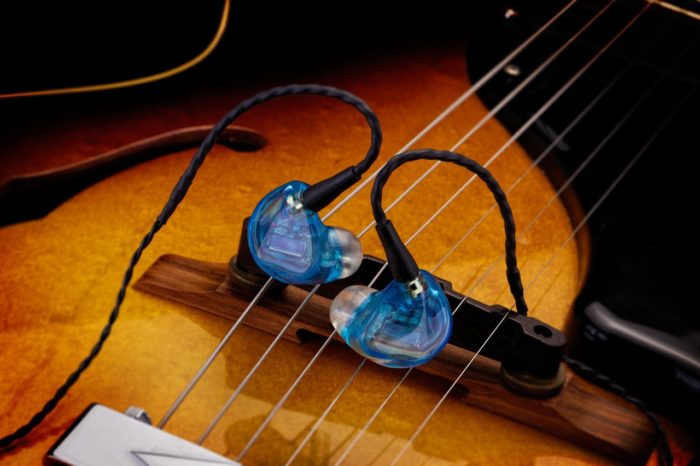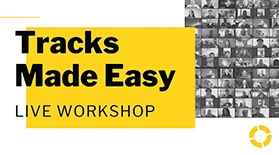Worship Teams
7 Tips to Ease the Transition From Floor Wedges to In-Ears

Not only is Sweetwater Sound the largest online retailer of musical instruments and pro audio equipment in the United States*, they are also passionate about equipping and advising worship musicians in their craft. In this feature, written exclusively for WorshipFuel, Sweetwater shares some of their top tips for transitioning to in-ear monitors.
In the beginning, there was the piano, the organ, and the choir...
Ok, that’s not the absolute beginning of all things, but let’s pretend. In those days, live sound for worship was easier to manage, and the technology setup on the platform was relatively simple and uncluttered, thanks in part to all those strategically staged plastic plants. 🙂
Somewhere along the way, other instruments such as guitars, pedal effects, keyboards, and drums found their way onto church platforms. Later, churches added visual communication technology such as projectors, LED walls, and cameras to broadcast/stream video. To compete with stage volume from other sources, Floor monitors (stage wedges), once suitable at typical “choir” volumes, were now being pushed to the limits of their effectiveness.
Consequently, the front rows of the church were now blasted with sound while the back rows could barely hear. A solution was needed to control the stage sound without adding clutter onstage. Enter in-ear monitors. Not only did in-ear monitors open up a new world of sound control, but they also improved personalization, performance, and communication across the entire worship team.
For all those reasons and more, many churches have transitioned from floor wedges to in-ear monitors. If you find yourself in a similar transition, these seven tips will help you make a smooth transition to in-ear monitors.
#1: Remember Why You Are Doing
This
It’s easy to get caught up in all
the cool technology and forget what we are doing and why it matters. The
reality is congregations sing less when the stage is either too loud or too
quiet. By switching to personal monitoring, you are serving the congregation
well, helping produce an environment where they feel comfortable to sing. This
is important to remember when you are lobbying the support of those who have to
work through some transitional discomfort as they learn a new way of
monitoring.

#2: Count the Cost
There are two “costs” to consider
when making any technology change. The most straightforward is the overall monetary
cost, but not so obvious is the volunteer burden. Some volunteers are very
technical and enjoy new widgets with knobs and lights. Others look at a bank of
faders blinking back at them and start to panic. If your team is the latter,
plan for some more time to explain and train them on the in-ear system. Which
leads to the next point…
#3: Explain the Process
The unknown is just that — unknown, and it’s often intimidating. It’s important to sit down with your team to clearly explain the transition process and set reasonable expectations for how long it may take for them to adjust to the new technology. Let your teams know exactly what you are planning to do and why it matters. Facilitate a safe space for questions and concerns — and spend as much time listening to their concerns as you do to explain the goals.
#4: Provide Transition Time
We wish we could shout this one! It
really does take some time to get comfortable with in-ear systems. It’s also a
good idea to not switch over to new technology until you’re team is ready and
the new system is fully tested. When possible, set up your new technology
alongside the old system or in a separate room so your teams have time to get
familiar with it. Too often we get panicked calls from customers needing help on
a Saturday because they ripped out all the old gear, put in new gear, and it
isn’t working yet. Give your teams plenty of time to transition well and provide
adequate training on how to use the gear properly, or what we like to call Tip
#5!
#5: Provide Training
Set aside time for training. Don’t assume people on your team are familiar with basic terms like mixing and panning. Most of the world is familiar with a knob to control volume, but a bank of faders can be foreign and intimidating. Train your team in a way that empowers them and allows them to ask questions. If you have “super-users” who claim to not need training, encourage them to sit through the training so they know how to help others. 😉
Here are the basics of what you need to hear in your in-ears. We cover this in detail in this article at Sweetwater, but the key is to teach your team to mix their in-ears sparingly. For best results, we recommend the following hierarchy for building your personal monitor mix:
- You should be the loudest in your mix.
- Timing Reference — This could be the click or the kick/snare, but NOT all the drums.
- Pitch Reference — Choose something that helps you stay on pitch by hearing the melody or harmony. (Again, this is not all the instruments, but AN instrument.)
- Pan, Pan, Pan! – EVERYTHING else is either muted or mixed quieter and panned left or right to create space. (Pro Tip: Use the physical instrument placement on the stage as a reference to pan your mix.)
#6: Use Ambient Mics
When first using an in-ear monitor, you will feel closed off to the rest of the team and congregation. What you are missing is the natural reverb bouncing off walls on the stage. When you can’t hear the congregation (or more technically called room ambiance), you will be tempted to take one of your monitors out. Don’t ever take one ear out! This is detrimental for your long-term hearing health. Some personal monitor systems feature built-in ambient mics to overcome this absence. If your system does not, place one or two condenser or shotgun mics at the corners of the stage, aimed toward the congregation. These mics will pick up helpful reflections from the stage walls as well as the sound of the people singing. Feed these mics to the in-ear monitor mix or to channels on each team members’ personal mixers. This will replace the “missing” sound of the room and the congregation in your ears, while protecting your hearing and controlling the sound.
#7: Encourage Investment in
High-quality In-ear Monitors
Don’t let your team use their consumer earbuds onstage as in-ear monitors. These devices are not designed for stage monitoring and usually lack the external sound isolation required, so they could end up damaging their hearing. Encourage your team to invest in their own set of in-ear monitors. They don’t necessarily have to be custom-molded in-ear monitors, although these provide the most personal hearing protection and allow you to get a model that best complements the instrument you are playing. While musicians are fairly used to investing money in their craft, vocalists don’t usually buy a lot of gear. Some churches will offer a stipend to help toward the purchase of a personal set of in-ear monitors. Other churches will give their musicians monitors. We find that if people have some “skin in the game,” they will tend to take care of them better.

Key Takeaways
Any one of these tips can be a starter for a training session with your team, and we encourage you to check out some of our other resources at Sweetwater or ask your Sweetwater Sales Engineer for more advice. If there is one key takeaway, it’s this: By taking the time to prepare for the transition, you’ll ensure that the technology solves challenges instead of creating new ones. Remember that the people serving on your teams are the ones who must interact with the technology. When they are well equipped and trained, they can bring their best to each worship service.
*Due to manufacturer restrictions, Sweetwater is limited in what they can ship outside of the United States. If you reside outside the United States, and are interested in purchasing an item, please call Sweetwater to find out if the item(s) can be shipped internationally.






